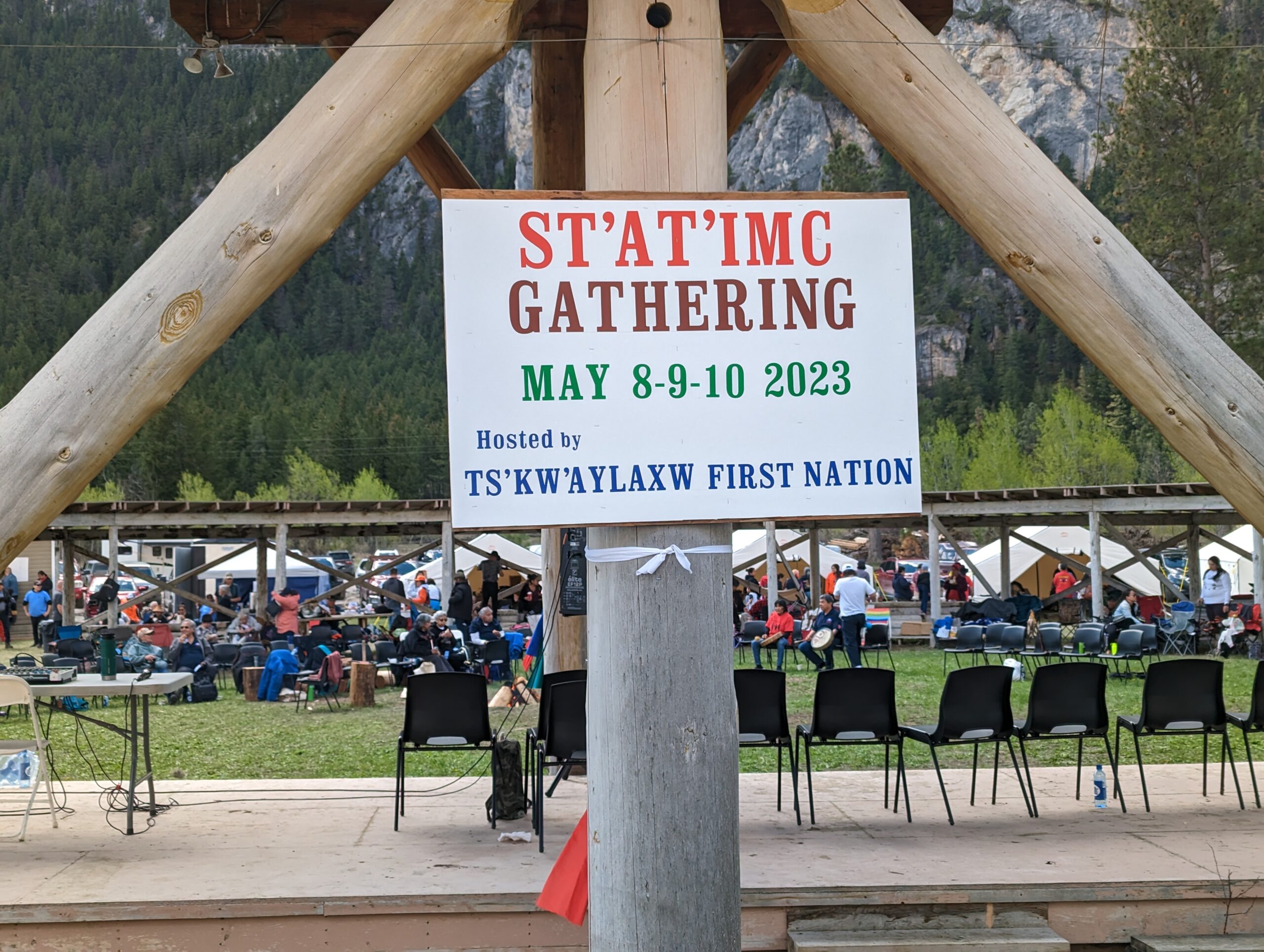On May 10 2023, several hundred members of the St’at’imc Nation from across their traditional territories came together to celebrate and uphold the principles of the 1911 Declaration of the Lillooet Tribe. The declaration rejects the claims of the B.C. government over their territory, demands payment for lands appropriated for settlement and commercial development, and recognition of their permanent and secure title:
We are aware the B.C. government claims our Country, like all other Indian territories in B.C.; but we deny their right to it. We never gave it nor sold it to them. They certainly never got the title to the Country from us, neither by agreement nor conquest, and none other than us could have any right to give them title.
The St’at’imc Nation are an Interior Salish people, who’s territory stretches from the Coast Mountains (several hours north of the Lower Mainland by car), along the Lillooet river, up the Fraser Canyon, and branching up the Bridge river valley and the Marble Canyon. The roughly 6 thousand members of the nation are mostly concentrated in 14 reserves, which were created by the Government of the Colony of British Columbia in the 1860s and 1870s without the signing of any treaties or consent from the St’at’imc Nation.
The program on May 10th included a reading of the declaration and speeches by chiefs and representatives from all the St’at’imc communities. Art Adolph, Director of Operations for the St’at’imc Chiefs Council, put the declaration in its historical context:
The theme of the day, both in the presentations of the chiefs and among the grassroots, was celebration of the continuing unity of the St’at’imc people and their ongoing resistance to colonialism. But how to assert the ownership and title talked about in the Declaration, and what these look like substantively, are more complicated questions.
The chiefs presented a variety of visions about how to engage (or not engage) the B.C. and Federal Governments. The St’at’imc Chiefs Council, representing the majority of St’at’imc people and communities, are not participating in the BC Treaty Process. But they are now faced with a decision about how to handle a new $200 million fund set up by BC’s NDP Government as part of its ‘Declaration Act’ responding to the U.N. Declaration on the Rights of Indigenous Peoples (UNDRIP). Like the Treaty Process, the Declaration Act proposes that Indigenous self-determination, self-government, rights and title, can all be realized while keeping Canadian sovereignty and territorial control intact.
Chief Darryl Bob Sr. of the Xaxli’p First Nation expressed skepticism about the process:
Michelle Edwards of the Sekwe’el’was First Nation, and leader of the St’at’imc Chiefs Council, suggested in her comments that the St’at’imc could use the B.C. UNDRIP process and funding to answer questions that need to be resolved before further steps toward self-government.
Going forward, how the St’at’imc Nation interprets the words and spirit of the 1911 Declaration will have profound implications for how they respond to the challenges of the treaty process, the federal governments ‘truth and reconciliation’ racket, and the B.C. governments 4 year UNDRIP implementation process.
Meanwhile, upholding the Declaration binds the St’at’imc Nation together. It is the political rock on which numerous acts of grassroots resistance are built. In recent years this has included the Sutikalh resistance to putting a ski resort in the Melvin Creek watershed, exposing the truth of St’at’imc children who died in the Kamloops Residential School, and the call for justice for murdered and missing Indigenous women.

Be part of the conversation!
Only subscribers can comment. Subscribe to The North Star to join the conversation under our articles with our journalists and fellow community members. If you’re already subscribed, log in.